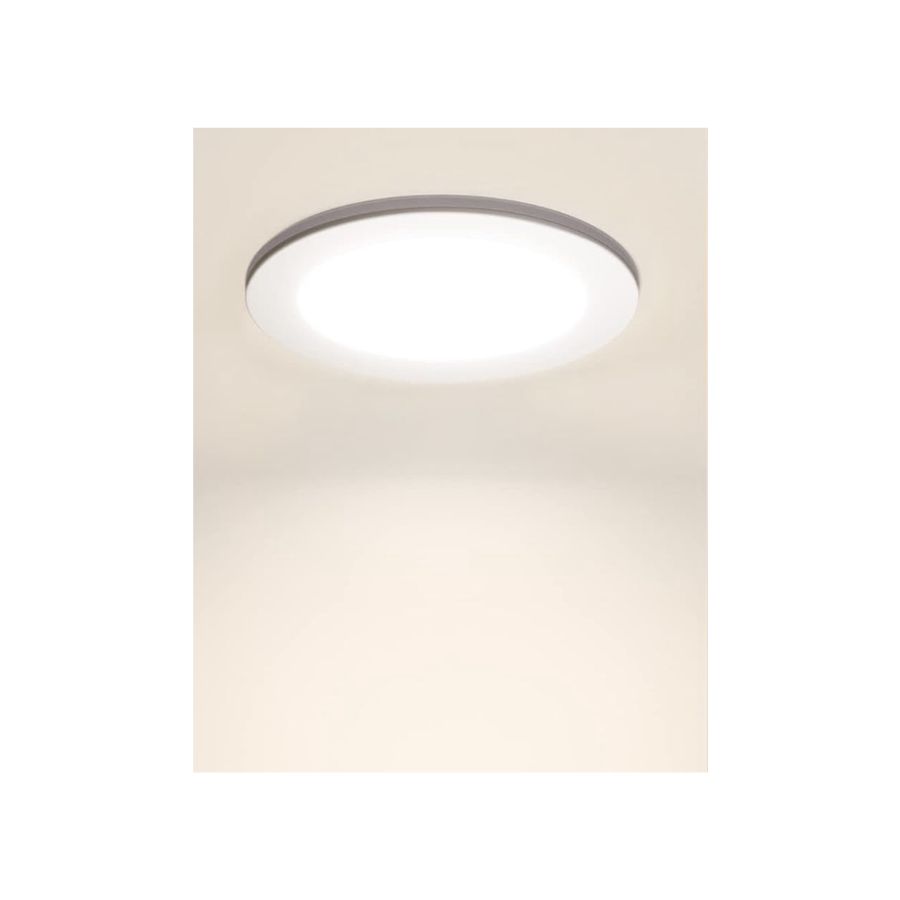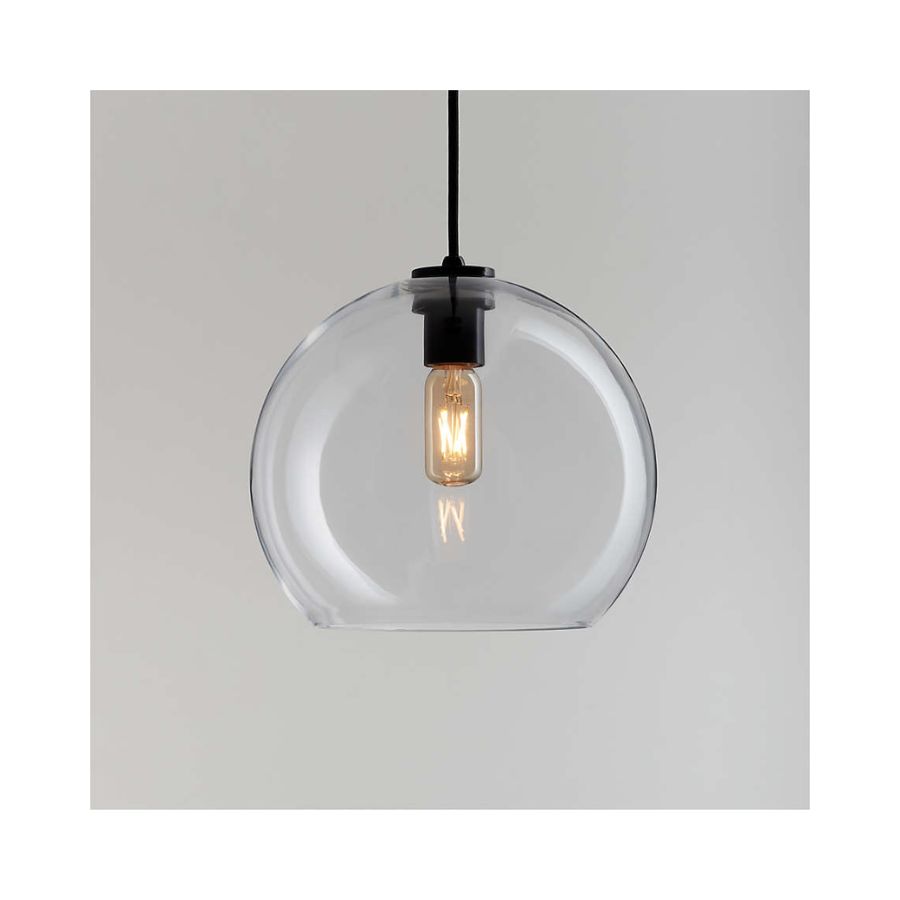How Do You Best Light Kitchen Countertops? 4 Tricks That Will Help You Get it Just Right
From multi-functionality to scale, designers share the key factors to consider to make sure you light your kitchen countertops correctly

For most of us, the kitchen truly is the heart of the home. No longer a space solely used for cooking, it’s become the room where that family gathers, kids do homework, and where the island countertop becomes a work from home desk. With so many activities taking place in one space, creating a lighting plan that caters to every need is not the most straightforward task.
A balance of function and form is needed. Lights that are task focused, to offer clear visibility when cooking and directional lights that can be controlled to illuminate dark countertop corners are a priority, but so is the scale and proportion of the light fitting within the space. Being able to change the intensity of the light throughout the day is equally important.
No matter what activity's underway in the kitchen, from chopping vegetables or making drinks to working from home, you'll need the right type of kitchen lighting over your countertops. Interior designers share the key factors you need to consider to light yours correctly.
1. Prioritize a multifunctional mix of lights

In a kitchen, lighting that is multi-functional is key. Consider the ways in which you use the space and ensure you have the necessary light options to enable it all. This will mean creating a balance of both overhead and task lighting. ‘Use a combination of overhead lighting and task lighting, such as under cabinet lights to brighten up the entire space and also provide targeted illumination where it's most needed,’ advise lighting experts Niki Wright and Scarlett Hampton. ‘Wall lights and picture lighting can also help to save worktop space,’ they add.
Bear in mind that you will need different lighting options for your cabinet kitchen countertops and your island worktop. ‘For an island specifically, you want to make sure you have one large chandelier, or 2-3 pendants,’ explains interior designer Kristen Harrison. ‘For other countertop areas, like near the stove, or sink, I love using downlighting in the way of wall sconces. Creating levels of light gives you, not only a well-lit area, but also a lot of visual interest,’ she says.
2. Recessed lights are best for overall lighting
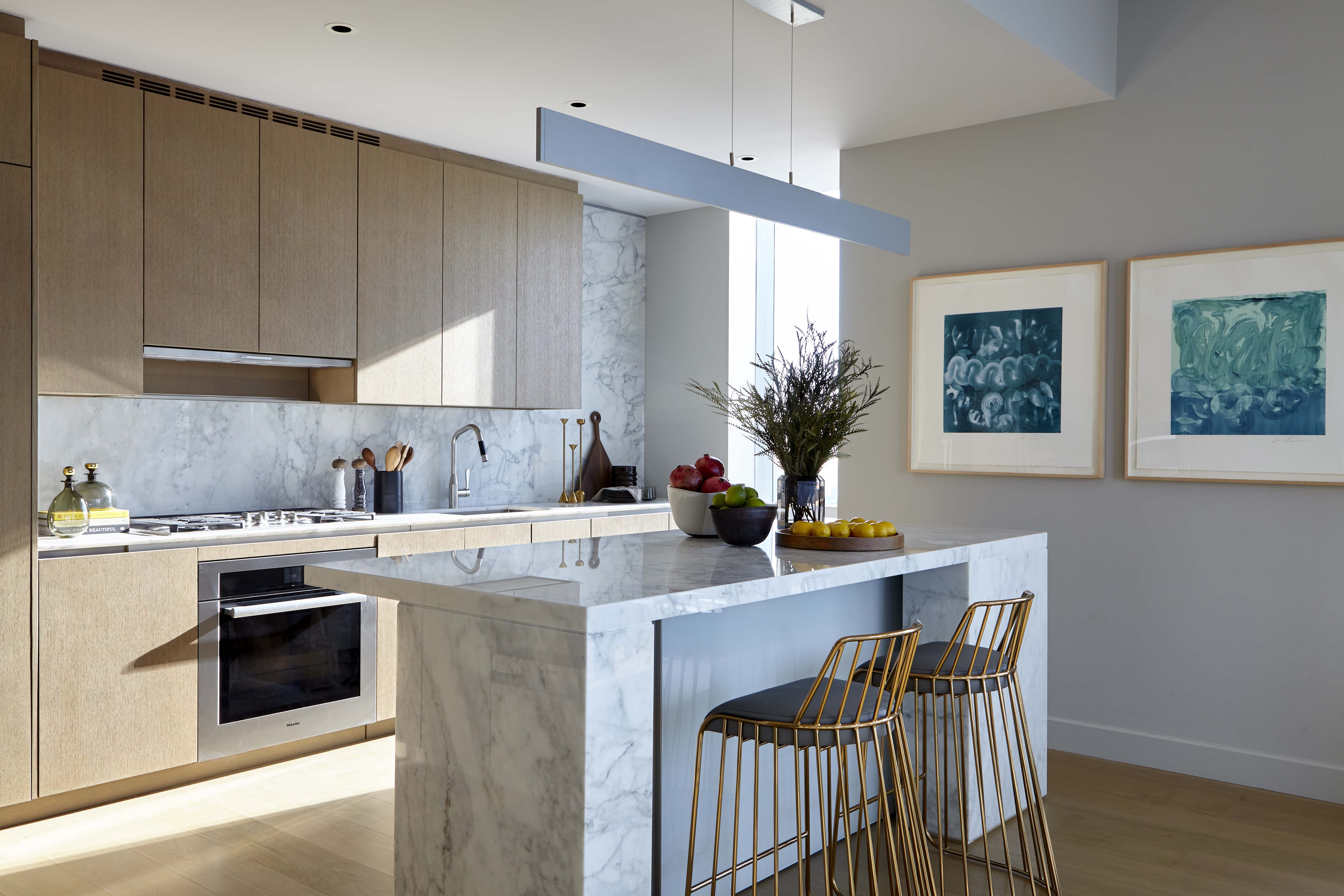
They might not be the go-to option for the living or bedroom areas of your home, but in utility-focused spaces they’re one of the most useful options to give you a good amount of light over your worktop areas.
‘The most common way to light kitchen countertops is by using recessed lighting, or can lights, as they’re commonly known,’ explains interior designer Liz Potarazu, adding that directional recessed lighting is even better to illuminate even those hidden corners of your countertops. ‘More modern installations may include directional recessed lighting, whereby you can point your light at a specific area, easily illuminating those hard-to-reach corners,’ she says.
The Livingetc newsletters are your inside source for what’s shaping interiors now - and what’s next. Discover trend forecasts, smart style ideas, and curated shopping inspiration that brings design to life. Subscribe today and stay ahead of the curve.
3. Under-cabinet lighting is ideal for even illumination of countertops
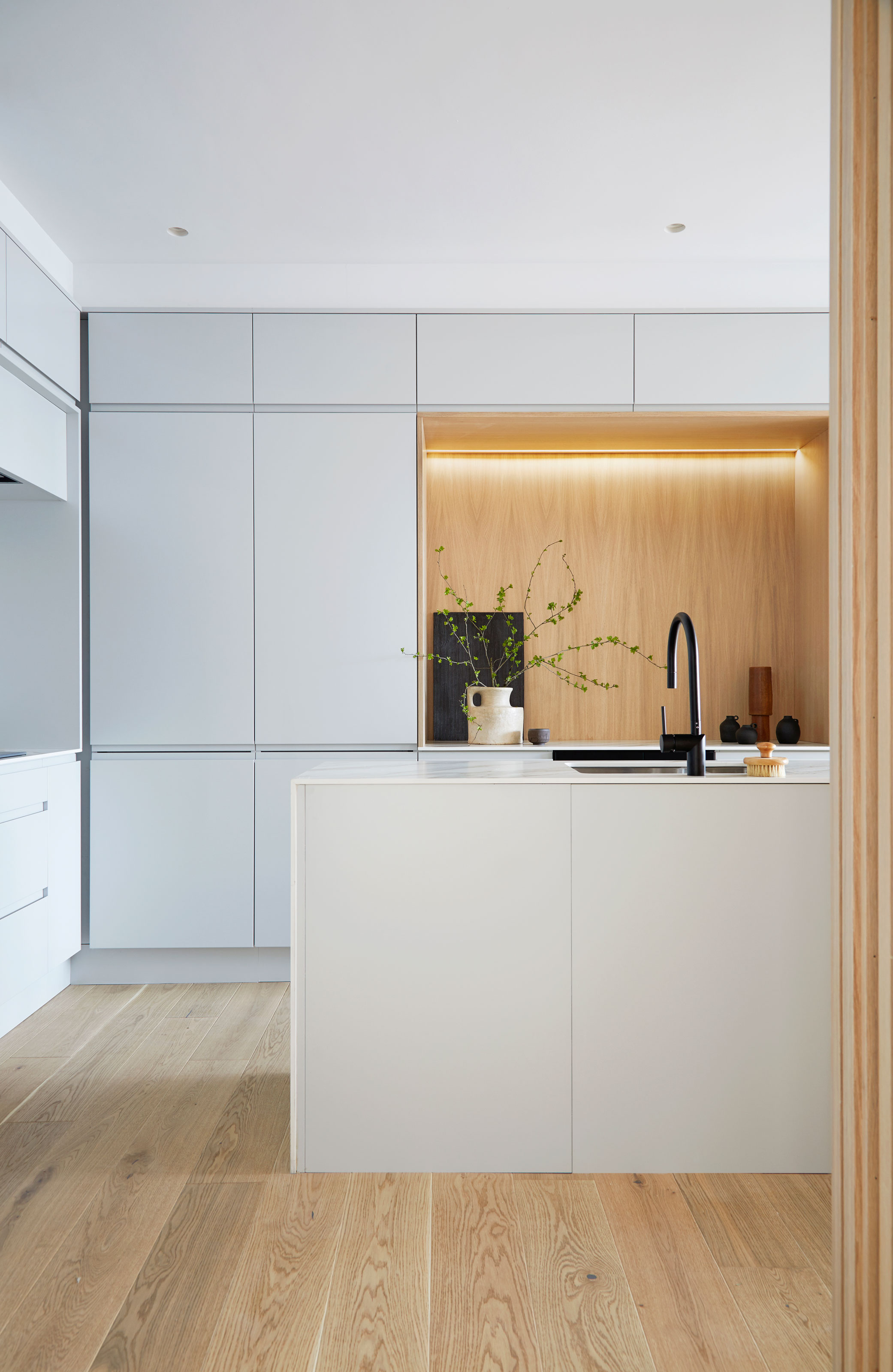
While recessed lights are great to ensure a good amount of light in the whole space, and illuminate the overall area of your countertops, it’s the under-cabinet lighting that is the most targeted, and proves most useful when good visibility is key. ‘Under-cabinet lighting is a sleek and effective way to illuminate your space. These lights can even be used in lieu of overhead lighting, creating an ambient atmosphere,’ Liz tells me.
‘Even illumination over a work surface is ideal, so under cabinet lighting beneath upper cabinets or floating shelves is the best task lighting at counters,’ adds residential architect Katherine S. White. ‘For under-cabinet lighting, if there’s an easy way to conceal the fixture, i.e. a lip at the front of your upper cabinet, then warm LED lighting tape is easiest. If you have no way to conceal the lights, small LED wafer lights sometimes called “puck lights” look best. Make sure you use 3000k color temperature lights or less to avoid a sterile, laboratory feel,’ she explains.
4. Think about scale to ensure the right amount of light
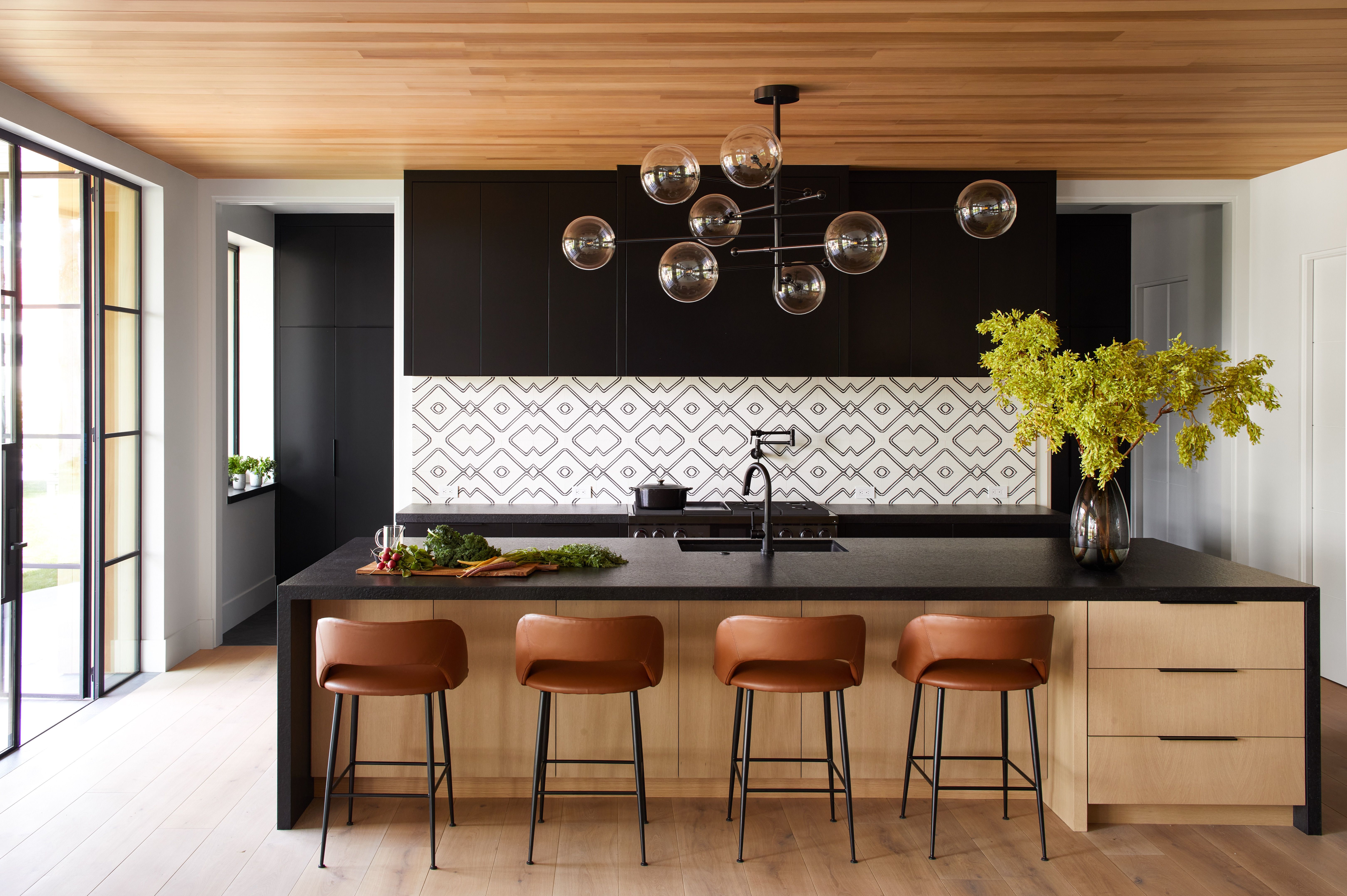
When choosing the right lights to illuminate your countertops, think about the overall size of your kitchen and cabinets. ‘Oversized lighting fixtures can provide ample illumination and make a bold design statement, but they may not be suitable for smaller kitchens or those with a more traditional style,’ Niki and Scarlett tell me. 'It's important to consider the scale of the lighting fixture relative to the space and other design elements in the kitchen to ensure it complements the overall aesthetic,’ add the experts.
If you have a kitchen island, pendant lighting is the most common way to light its worktop area, and a great way to add style to the space. ‘Pendant lights can be individual hanging lights or one linear pendant with multiple light bulbs,’ explains Liz. ‘If your kitchen is small but you still want a more designed feel, flush mount lighting above the island will do the trick. Lastly, track lighting is still common in kitchens today, particularly in more modern-style homes,’ she advises.
Avoid this mistake when lighting your kitchen
There’s a lot to think about when creating your kitchen lighting plan, and with so many different types of lights needed, designers agree there’s one mistake that’s very easy to make. ‘The worst thing you can do with your lighting in the kitchen is to create shadows. It’s a place where you use sharp knives and need exact measurements, so it’s important for it to be well lit,’ warns Kristen. ‘Lighting is an absolute must, and selecting the proper lighting can be the difference in a space appearing too dim, or unbalanced,’ adds interior designer Breegan Jane.
With the myriad types of lights we need in a kitchen, the solution to avoiding shadows is in the good planning of your overall lighting scheme. ‘A lot of people like a mix of recessed lighting, pendants, sconces, and under-cabinet lighting. I really try to methodically plan where I’m going to place my fixtures based on how someone moves throughout their kitchen,’ shares Kristen, emphasizing the importance of firstly assessing in detail how the space will be used, and then selecting the optimal lights to enable all the tasks that will be carried out in the room.
Raluca formerly worked at Livingetc.com and is now a contributor with a passion for all things interior and living beautifully. Coming from a background writing and styling shoots for fashion magazines such as Marie Claire Raluca’s love for design started at a very young age when her family’s favourite weekend activity was moving the furniture around the house ‘for fun’. Always happiest in creative environments in her spare time she loves designing mindful spaces and doing colour consultations. She finds the best inspiration in art, nature, and the way we live, and thinks that a home should serve our mental and emotional wellbeing as well as our lifestyle.
